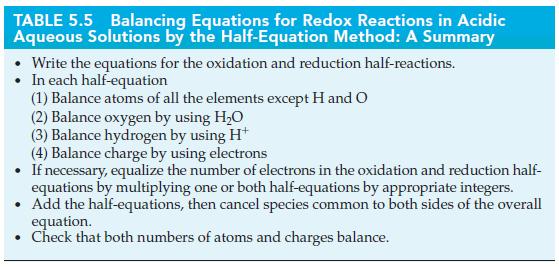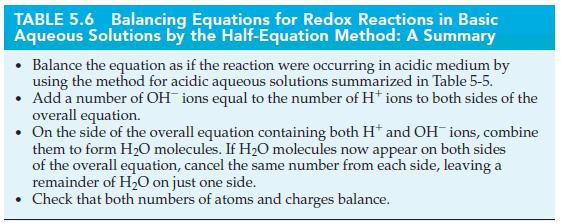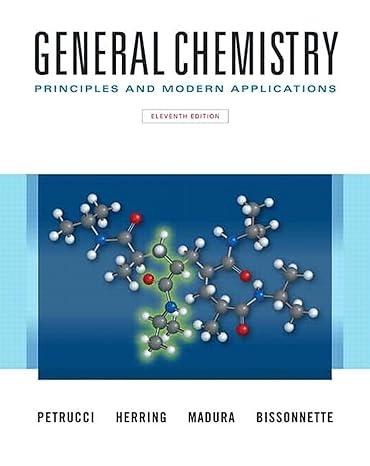In this problem, we describe an alternative method for balancing equations for oxidation-reduction reactions. The method is
Question:
In this problem, we describe an alternative method for balancing equations for oxidation-reduction reactions. The method is similar to the method given previously in Tables 5.5 and 5.6, but it places more emphasis on the assignment of oxidation states. (The method summarized in Tables 5.5 and 5.6 does not require you to assign oxidation states.) An emphasis on oxidation states is warranted because oxidation states are useful not only for keeping track of electrons but also for predicting chemical properties. The method is summarized in the table above. The method offers a couple of advantages. First, the method applies to both acidic and basic environments because we balance charges by using either H+ (for acidic environments) or OH- (for basic environments). Second, the method is somewhat more efficient than the method we described previously because, in the method described here, we balance only once for charge and only once for hydrogen and oxygen. In the other method, we focus on the half-equations separately and must balance twice for charge and twice for hydrogen and oxygen. Use the alternative method described above to balance the following oxidation-reduction equations.
(a) Cr2O72-(aq) + Cl-(aq) → Cr3+(aq) + Cl2(g) (acidic solution)
(b) C2O42-(aq) + MnO4-(aq) → CO32-(aq) + MnO2(s) (basic solution)
Tables 5.5

Tables 5.6

Step by Step Answer:

General Chemistry Principles And Modern Applications
ISBN: 9780132931281
11th Edition
Authors: Ralph Petrucci, Jeffry Madura, F. Herring, Carey Bissonnette





